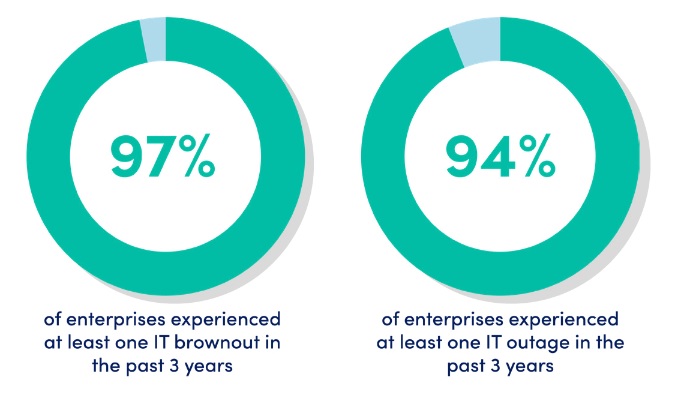
IT downtime, which includes both brownouts and outages, has increased during the pandemic, according to a study by LogicMonitor.
In addition, the study found that previously siloed IT teams and technologies are converging as enterprises accelerate their modernization efforts in reaction to COVID-19. The responsibilities of CIOs are expanding and the roles of traditional IT operations and administration teams are moving closer and closer to those of agile application developers and quality and security engineers as business priorities shift to align with the customer and their digital experience.
The study findings include:
■ 79% of global CIOs and CTOs feel that their input and importance within the boardroom has increased in the last 12 months (86% of CIOs/CTOs based in North America feel that way; 78% based in EMEA; 74% based in APAC).
■ The vast majority of global enterprises (93%) have seen some level of convergence between traditional IT operations and administration teams and development teams in the last 12 months.
■ 94% of those respondents credit the 2020 COVID-19 pandemic with accelerating this convergence.
■ 21% of global IT leaders believe that improved security will be the top benefit resulting from convergence between ITOps and DevOps; followed by greater ability to scale (16%); better cross-org collaboration/alignment (14%); reduction in outages/brownouts (12%); and better customer experience (11%).
"One of the key benefits of the convergence between ITOps and DevOps is that such a synergy makes it increasingly feasible to achieve true unified IT observability within modern enterprises," said Christina Kosmowski, President of LogicMonitor. "As our research shows, observability is all about gaining full visibility into the health, performance and availability of an organization’s IT stack. Companies who achieve unified observability will find it far easier to complete their digital transformation initiatives and succeed in today’s digital economy ...”
Enterprises Prioritize Data Security, Cloud and IT Automation in Today's Era of Remote Work
Many IT leaders are changing the way they invest in various IT initiatives as digital transformation accelerates due to COVID-19 and the rise of remote work.
■ In 2020, 73% of global IT leaders substantially increased their investments in data security; 71% substantially increased their investments in cloud technologies and services, and 68% substantially increased their investments in IT automation.
■ In 2020, 17% of global enterprises decreased their investments in on-premises technologies.
■ 11% of global enterprises say that expanding use of the cloud is their number one priority in 2021.
■ 75% of global IT leaders plan to increase investment in both data security and cloud technologies and services in the next 12-24 months; 71% of global IT leaders plan to increase investment in IT automation in the next 12-24 months.
IT Outages and Brownouts Remain Widespread
One negative IT trend that global businesses continue to experience at alarming rates — despite the severe negative business impact — is IT downtime, which includes both brownouts and outages. Global IT leaders identify remote work, the Internet of Things (IoT) and migration to the cloud as the top three trends contributing to widespread downtime, although respondents based in EMEA mention mobile computing as a key contributor, and respondents in APAC mention edge computing as a key contributor.

■ In the past three years, 97% of global IT leaders said their organization had experienced an IT brownout; 94% said their organization had experienced an outage.
■ 51% of IT leaders said they had seen an increase in IT downtime as a result of the pandemic since March 2020.
■ Respondents in North America were more likely to see an increase in downtime since the pandemic began (57%), compared to Europe (50%) and APAC (48%).
■ 7% of IT leaders admit to experiencing 50 or more brownouts and 50 or more outages in the last three years.
■ Enterprises experience an average of 15 IT outages every 3 years and 19 brownouts.
■ Lost productivity tops the list as the most negative impact IT leaders have experienced as a result of IT brownouts (66%) and outages (61%), followed by lost revenue (43% for brownouts and 42% for outages) and damage to brand/reputation (31% for brownouts and 32% for outages).
■ 16% of IT leaders say their organization was shut down permanently as a result of IT outages during the past three years.
As the world continues the rapid pace of digital transformation — made even more imperative by the ongoing pandemic — organizations cannot afford to experience downtime. By embracing the technologies that provide them with full observability into their IT infrastructure, organizations can mitigate the risk of downtime and quickly resolve issues when they do occur.
